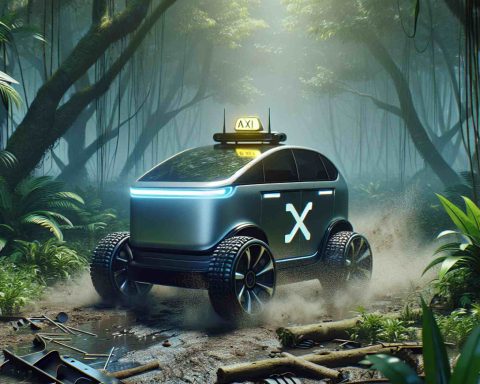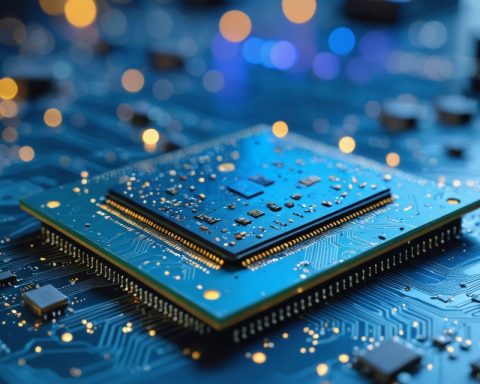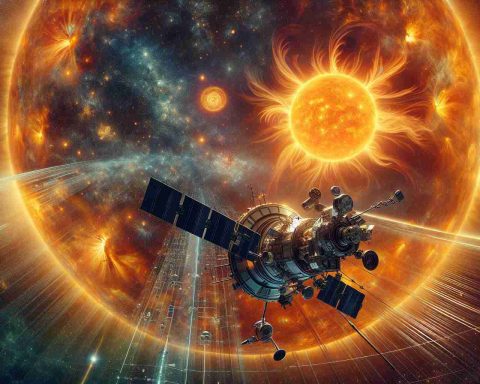- Smart telescopes are using AI to revolutionize the observation of planetary alignments.
- These telescopes offer real-time tracking, high-definition visuals, and the ability to livestream events.
- The blend of technology provides an interactive experience for both amateurs and professionals.
- Future insights could include detailed analysis of planetary compositions and habitability.
- Smart telescopes democratize access to celestial events, enhancing space exploration enthusiasm.
The age-old fascination with planetary alignments is taking an exhilarating twist, thanks to groundbreaking “smart” telescope technology. As we enter an era where space exploration and observation are deeply intertwined with artificial intelligence, a new cohort of these advanced telescopes promises to revolutionize the way we observe celestial events like planetary alignments.
Traditionally, planetary alignments—the apparent linear arrangement of planets in the night sky—have been subjects of both scientific study and popular astrology. While astronomers have long been able to predict these events with precision, the latest advancements are set to enhance our understanding and experience of such alignments dramatically.
Smart telescopes equipped with machine learning algorithms can now track and predict planetary movements in real-time, offering unprecedented accuracy and detail. These telescopes also feature innovative imaging technologies, which allow them to capture high-definition visuals and livestream events directly to our digital devices, offering an interactive and engaging experience for both amateur stargazers and professional astronomers alike.
Looking to the future, this blend of AI and smart technology could offer new insights into planetary systems beyond our own. By analyzing data captured during alignments, scientists could gain a deeper understanding of planetary compositions, atmospheres, and potential habitability. This exciting development not only enhances our appreciation for the night sky but also paves the way for new discoveries that could reshape our knowledge of the universe.
In essence, these smart telescopes are making the secrets of planetary alignments accessible to all, expanding our cosmic horizons and kindling a renewed excitement for space exploration.
Discover the Future of Stargazing: How AI-Powered Telescopes Will Change Planetary Alignment Observations Forever
Unlocking the Potential of Smart Telescopes in Planetary Alignment
As we delve deeper into the cosmos with cutting-edge technology, the potential for new astronomical discoveries is greater than ever. Smart telescopes, integrated with artificial intelligence, are reshaping the way we experience and understand planetary alignments. Here’s a look at this exciting evolution in stargazing.
How do smart telescopes enhance our understanding of planetary alignments?
Smart telescopes are revolutionizing the observation of planetary alignments by integrating machine learning algorithms that track and predict planetary movements with incredible precision. These telescopes are equipped to:
– Capture high-definition visuals through advanced imaging technologies, offering crystal-clear views of planets and celestial events.
– Livestream events to digital devices, providing real-time, interactive stargazing experiences.
– Analyze planetary data during alignments to offer insights into planetary compositions, atmospheres, and even the potential habitability of distant worlds.
With these capabilities, smart telescopes not only boost accuracy but also enrich our comprehension of planets both within and beyond our solar system.
What are the key features and limitations of AI-powered telescopes?
Features:
– Real-time prediction: Machine learning algorithms provide real-time updates and notifications for upcoming celestial events.
– Interactive experiences: Users can enjoy live streams of events on their devices, enhancing engagement with the night sky.
– Data-rich insights: Offers detailed analysis for scientific exploration, contributing to academic and professional astronomy.
Limitations:
– Cost and accessibility: The advanced technology often comes with a high price tag, potentially limiting access for amateur astronomers.
– Dependency on weather conditions: Like traditional telescopes, visual capabilities can be impaired by poor weather or light pollution.
What trends and future innovations can we expect in telescope technology?
The integration of AI in telescopes is just the beginning. Future innovations and trends may include:
– Improved affordability: As technology advances, the cost of smart telescopes is likely to decrease, making them more accessible to a broader audience.
– Enhanced compatibility: Devices with better integration with various digital platforms for a seamless user experience.
– Sustainability: Telescopes designed with sustainable materials and energy-efficient operations, aligning with global environmental goals.
– Advanced AI models: Continuous upgrades in AI technology for even greater accuracy in predictions and analyses.
These trends point to a future where stargazing is more democratized, allowing even casual observers to partake in significant astronomical events with ease and insight.
For more insights into advances in space exploration technology, visit Nasa, and for information on astronomical equipment, head over to Sky and Telescope.








